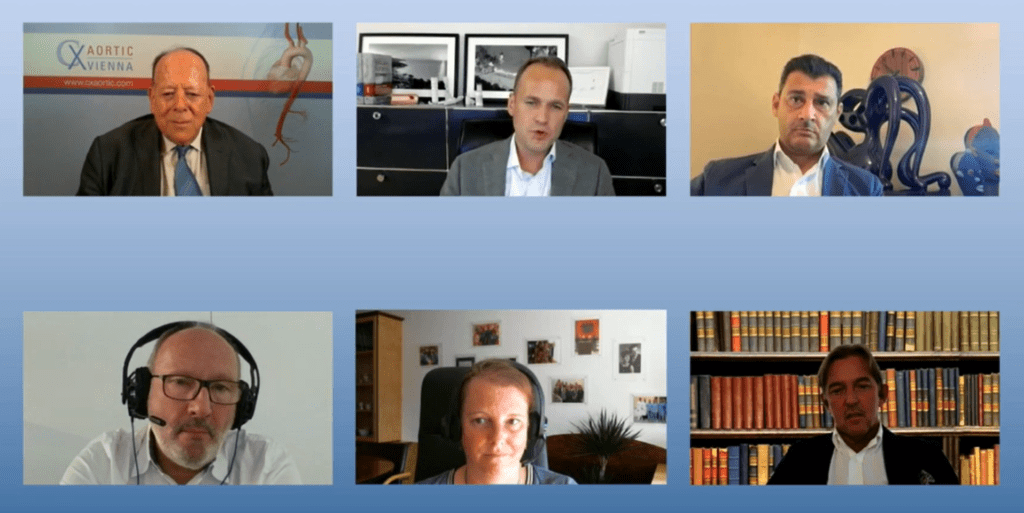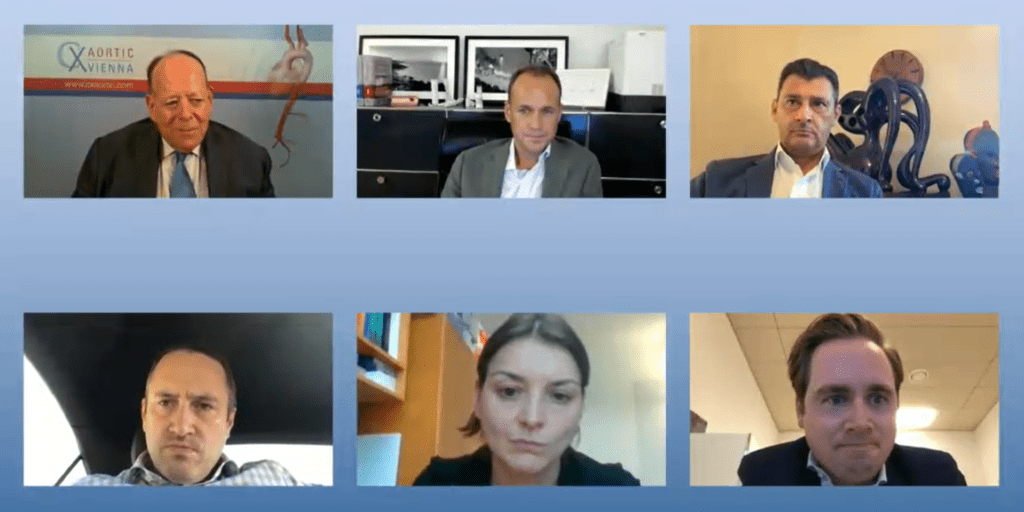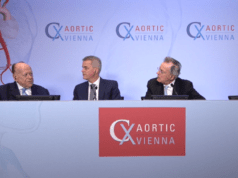
The final day of CX Aortic Vienna opened with a second joint session designed and hosted by the Swiss Society for Vascular Surgery (SGG) and the Austrian Society of Vascular Surgery (ÖGG). Delivered in English, presentations reached a global audience, with discussion prompting questions from South America to Southeast Asia.
This session, and all other sessions from CX Aortic Vienna, is available to view on demand. Click here to register and access the recording.
Opening the session, Juerg Schmidli (Bern, Switzerland) spoke on how the reimplantation of segmental arteries can be simplified in thoracoabdominal aortic aneurysm (TAAA) open repair, followed by Sabine Wipper (Innsbruck, Austria), who presented an experimental study to the live, global audience, describing a novel hybrid graft for TAAA repair. Then, Jos van den Berg (Lugano, Switzerland), took to the online podium to consider the endovascular treatment of malperfusion associated with aortic dissection.
Peter Matt (Zurich, Switzerland) followed on to pitch antegrade thoracic endovascular aortic repair (TEVAR) against the frozen elephant trunk technique. While he said both were “important treatment options” for a variety of thoracic aortic disease, he focused on their use in patients with acute type A aortic dissection. As was discussed previously during CX Aortic Vienna, new devices for fragile aortas are becoming available, and the precise indication for these will be watched with great interest.

Next on the agenda, Marie Elisabeth Stelzmüller (Vienna, Austria) provided the CX Aortic Vienna audience with her team’s experience of TEVAR for the treatment of acute complicated type B dissections, which has been published in the Journal of Vascular Surgery. The paper detailed TEVAR in a cohort of 55 patients, where the operators achieved primary technical success in 91% of the patients.
Stelzmüller concluded: “TEVAR is an excellent treatment modality in this difficult patient group, and yields good mid- to long-term results. […] Conventional surgery is not a viable option in the treatment of acute complicated type B dissections, and should only be considered as a bailout strategy.”
Closing the session with a caution against oversizing, Benedikt Reutersberg (Zürich, Switzerland) presented the influence of TEVAR diameter on outcomes in aortic type B dissections. “To the best of our knowledge,” he said, “this is the first study showing that an undersizing of TEVAR in the range of 0–10% in type B aortic dissections is associated with fewer complications and significantly better survival.”













